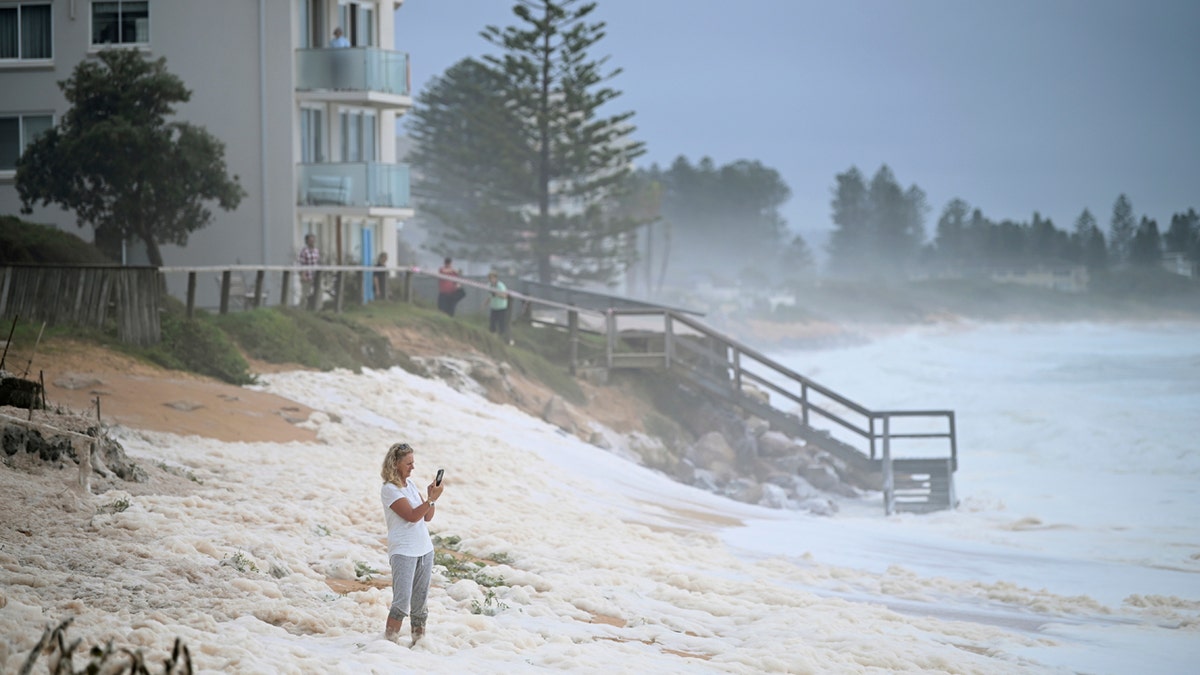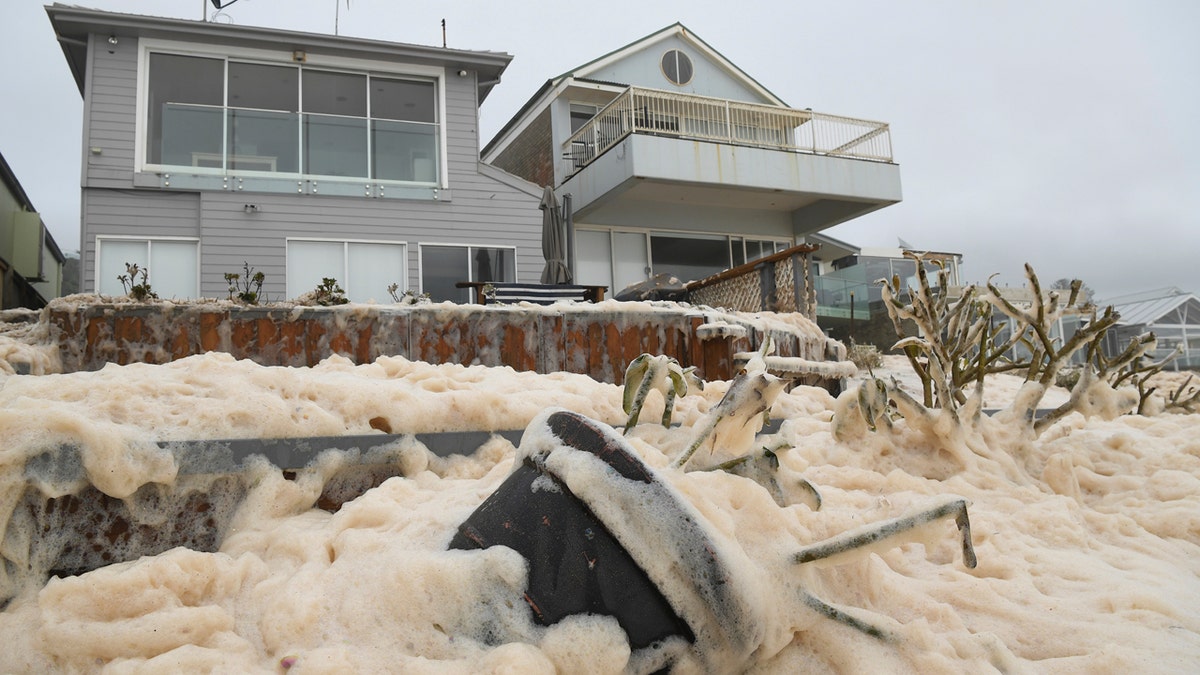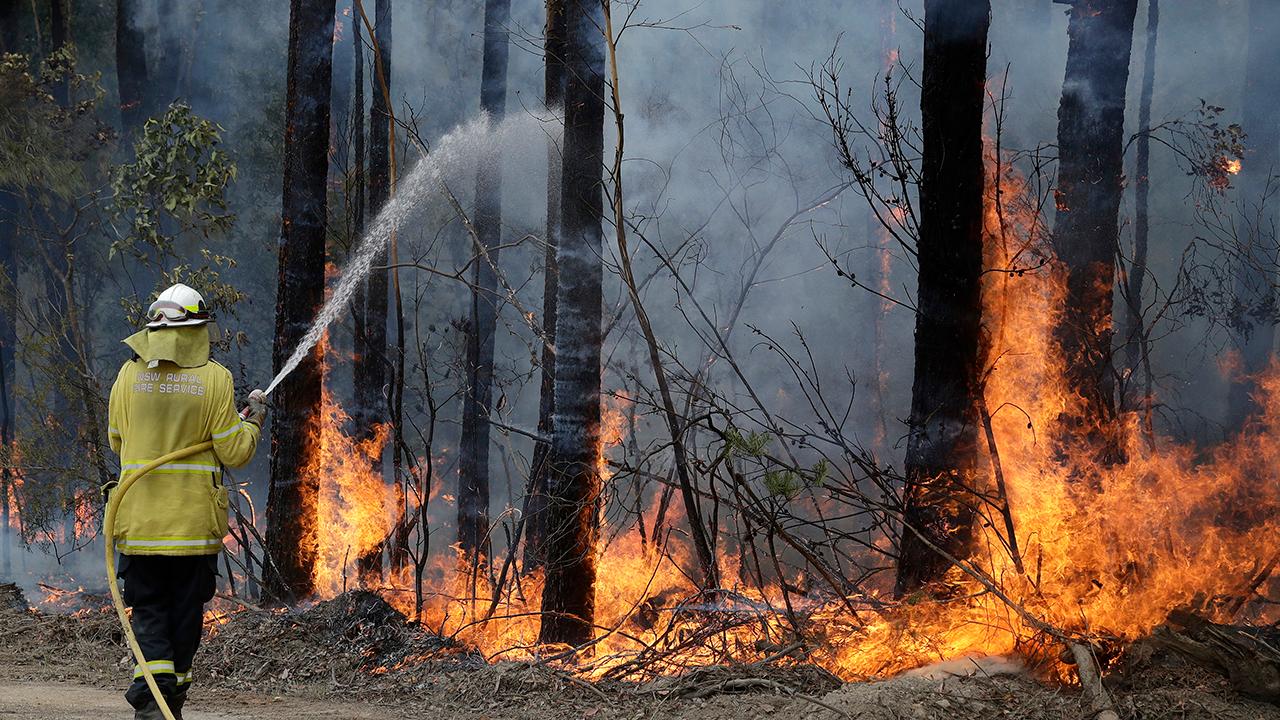Australia battered with severe storms, flooding
Brutal storms hit the country’s eastern coast leaving more than 100,000 people without power.
After months of wildfires that have ravaged Australia, the end may finally be in sight.
The New South Wales Rural Fire Service said Monday recent rains have "significantly assisted" in reducing fire activity across the state, where now some 26 bush and grass fires are still burning, with four not yet contained. The recent rain and flash flooding from the storms have extinguished 30 blazes, some of which were burning for months.
On Saturday, authorities declared the Currowan Fire south of Sydney was finally out after destroying more than 300 homes and razing 1.2 million acres over two-and-a-half months.
HEAVY RAIN IN AUSTRALIA EXTINGUISHES MAJOR WILDFIRE, CAUSES FLASH FLOODING
RFS spokesman James Morris told the BBC on Tuesday the weather forecast for the rest of the week may allow firefighters to "set the fires down."
"We are hoping by the end of the week we may be able to have zero uncontained fires across NSW," he told the BBC.

Recent rains have helped drenched deadly wildfires in Australia. (NSW RFS)
In all, Australia's wildfires killed at least 33 people and destroyed more than 3,000 homes.
The fires began causing widespread destruction toward the end of 2019, which was both the hottest and driest year in Australia's recorded history, according to the Bureau of Meteorology.
During the deluge over recent days, coastal areas have experienced some of the heaviest rainfalls, which has caused flash flooding in some places. Sydney, the central coast and the Blue Mountains received up to 16 inches since Friday, representing some of the heaviest falls in decades.

A resident inspects sea foam brought by waves approaching on beach front houses after heavy rain and storms at Collaroy in Sydney's Northern Beaches, Monday, February 10, 2020. (Joel Carrett, AAP Image via AP)
Dams in the greater Sydney area were more than 64 percent full on Monday after being only 42 percent full a week earlier, according to officials. More rain is forecast over the coming days.
AUSTRALIA WILDFIRE CONTAINMENT EFFORTS GIVEN A BOOST BY HEAVY RAIN AND FLOODING
Recent storms have created treacherous conditions near Sydney, with rough seas that have caused beachfront areas to fill with sea foam.

Sea foam brought by waves approaches on beach front houses after heavy rain and storms at Collaroy in Sydney's Northern Beaches, Monday, February 10, 2020. (Joel Carrett, AAP Image via AP)
Emergency response services in NSW said they had received about 10,000 calls across the state on Monday. Severe weather downed trees, flooded homes and disrupted public transportation systems across the region.
CLICK HERE FOR MORE WEATHER COVERAGE FROM FOX NEWS
While the recent rains may have eased the fires, experts say it will take some time yet to know to what extent the rainfall has replenished dried-up rivers and quenched parched soil in some inland areas most affected by the 3-year drought.
Quentin Grafton, an economics professor and water expert at Australian National University in Canberra, told the Associated Press the rain had broken the drought in some towns but had not fallen evenly across all the affected areas.
“At this stage, it's very good news, and certainly much more than people could have wished for or expected,” he said of the rainfall. “There are some very happy people.”
Grafton said the drought had badly affected an area of more than 580,000 square miles, which is larger than the country of Ethiopia. He said monitoring on major rivers over the coming days should provide a clearer picture of how much the rain has helped.
The Associated Press contributed to this report.


